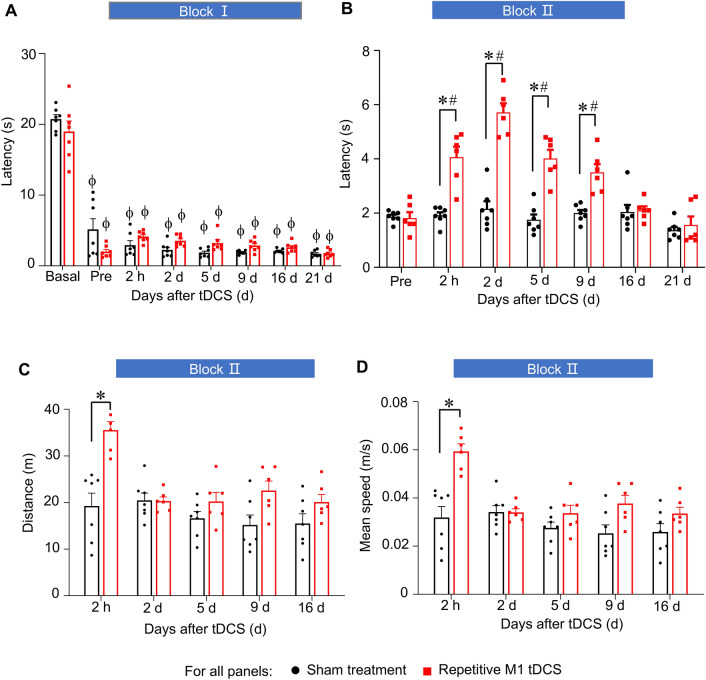Figure 3.
Comparison of the impact of the application of Block I and Block II anodal M1 tDCS over early and the chronic phase of neuropathic pain post-nerve injury (SNI), respectively, on cold allodynia and motor function. (A,B) Partial, significant reversal of allodynia to cold, shown in form of latency of nociceptive responses to 5° temperature, by repetition of anodal M1 tDCS in chronic phase post-SNI (Block II), but not by the first 5-day cycle of M1 tDCS over the early phase post-SNI (Block I) in comparison with the respective sham treatment group on. (C,D) Early and short-lasting enhancement of locomotion parameters by anodal M1 tDCS (Block II). n = 7 mice for the sham treatment group and n = 6 mice for repetitive M1 tDCS group; ANOVA for repeated measures was performed, followed by Sidak’s test for multiple comparisons; *indicates p < 0.05 as compared to the corresponding sham group, # indicates p < 0.05 as compared to the pre-stimulation value within each group. ϕ indicates p < 0.05 as compared to the basal value within each group Data are represented as mean + /− S.E.M.

